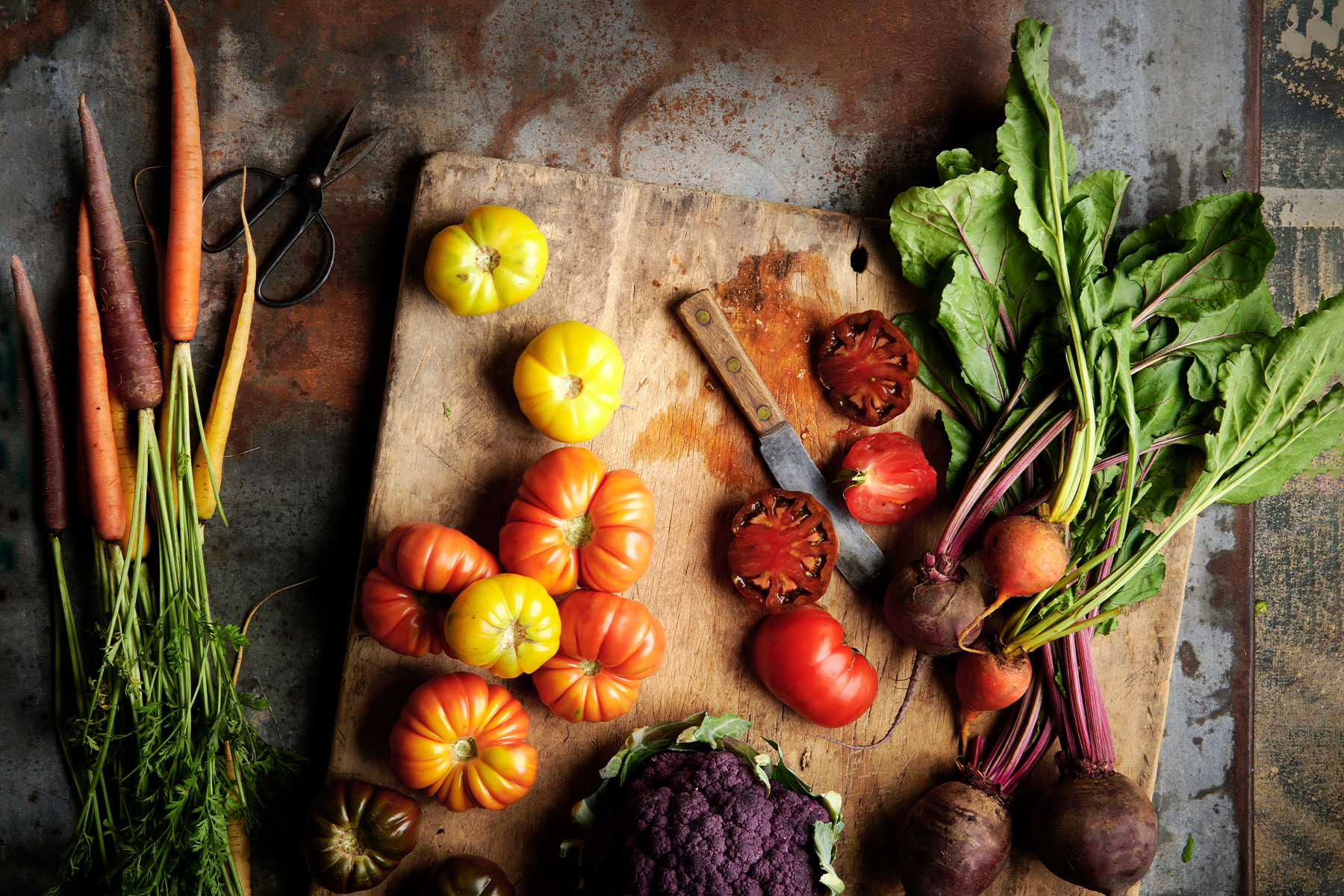Think about your summer vegetable garden. If the phrase “spectacular failure” comes to mind, I have good news: You get a second chance!
The hot months are a no man’s land for growing vegetables in North Texas, as pollen begins to lose viability once average daytime and nighttime temperatures rise above 90 and 75 degrees, respectively. Without viable pollen, pollination fails and vegetables stop setting fruit. This effect is most pronounced in large-fruited tomatoes, cucumbers, and squash.
The solution is to work around the heat, not against it, by taking advantage of more favorable growing conditions in spring and fall, when days are warm and nights are cool.
My Favorite Veggies to Grow This Time of Year
Tomatoes
Tomatoes thrive in the fall, but proper planting time is key. To grow your own transplants by seed, start seeds indoors between May 15 and June 1. Transplant homegrown or nursery-bought seedlings into the garden between July 4 and July 20. Look for varieties that produce small or medium-sized fruit.
Root Crops: Beets, Radishes, and Carrots
Sow beets and carrots directly between September 1 and September 30. Radishes can be direct-sown anytime between August 25 and October 15. Root crops don’t care for our dense and heavy native soils, so plant in raised beds or amend ground soil with high quality compost and expanded shale before planting.
Summer and Winter Squash
Plant winter squash by direct seed between July 1 and August 10. Best types for North Texas include butternut, acorn, kabocha, and small-fruited pumpkins. Summer squash can be direct-sown between August 1 and August 25. Floating insect mesh can protect against squash vine borers and squash bug infestation. Remove mesh once plants start flowering.
Cauliflower and Broccoli
Start cauliflower and broccoli by seed indoors between August 1 and August 25. Set out homegrown or nursery-bought transplants anytime between September 1 and November 1. Both vegetables are heavy feeders and need plenty of water and organic fertilizer to form large heads.
Eggplant
You can plant eggplant anytime after the last spring frost through July 25. With consistent watering and fertilizing, eggplant will continue to set fruit all summer long until the first fall frost. My favorite varieties include “Midnight Moon,” “Paloma,” “Ping Tung,” “Fairy Tale,” and “Rosita.”
Tips for a Great Fall Garden
- Garden Tip #1
- Garden Tip #2
- Garden Tip #3
Fall transplants are available from select local nurseries (see a list in the side bar), but you can grow more unique varieties and get better control over timing if you start vegetables by seed yourself.
Timing is critical. If you plant things too early, you risk exposing seedlings to heat stress. If you plant too late, the plants don’t have enough time to develop and produce before the first freeze. (Average first freeze date for the DFW area is November 21.)
Keep newly planted vegetables as happy as possible. Be consistent with watering, mulch soil to retain moisture, and set up shade cloth.
Your Fall Garden Plan
The Dallas Garden School’s comprehensive guide for what, where, and when to plant.
July
Seed Indoors
- Marigolds
- Zinnias
Starting July 25
- Cauliflower
- Brussels Sprouts
- Cabbage
- Broccoli
Seed Outdoors
- Small-fruited melons
- Winter Squash
- Southern Peas
- Okra
- Pumpkin
- Black-Eyed Peas
- Sunflowers
Transplant
- Tomatoes (fall)
August
Seed Indoors
- Cauliflower
- Broccoli
- Cabbage
- Brussels Sprouts
- Greens
- Foxglove
- Delphinium
- Snapdragons
- Strawflower
- Perennial Flowers
Seed Outdoors
- Swiss Chard
- Chinese Cabbage
- Beans
- Corn
- Cucumbers
- Zucchini
- Okra
- Pumpkin
- Black-Eyed Peas
- Southern Peas
- Winter Squash
- Radish
- Turnips
- All Greens
Transplant
- Chinese Cabbage
September
Seed Indoors
- Swiss Chard
- Mustard Greens
- Collard Greens
- Lettuce
- Kale
- Spinach
Seed Outdoors
- Radish
- Turnips
- Collard Greens
- Lettuce
- Kale
- Spinach
- English/French Peas
- Beets
- Carrots
- Parsnips
- Leeks
- Onions
- Poppies
- Larkspur
- Ammi
Transplant
- Broccoli
- Brussels
- Sprouts
- Cabbage
- Cauliflower
- Lettuce
- Greens
October
Seed Indoors
Until October 15
- Swiss Chard
- Mustard Greens
- Collard Greens
- Lettuce
- Kale
- Spinach
Seed Outdoors
Until October 15
- Radish
- Turnips
- Collard Greens
- Lettuce
- Kale
- Spinach
- Turnips
After October 15
- Garlic Cloves
- Leeks (seed)
- Onions (seed)
- Sweet Peas
- Poppies
Transplant
- Peas
- Poppies
- Broccoli
- Brussels Sprouts
- Cabbage
- Cauliflower
- Collard Greens
- Kale
- Mustard Greens
- Swiss Chard
- Spinach
- Lettuce
Callie Works-Leary is a Texas Master Gardener and founder of The Dallas Garden School, which offers classes and resources for North Texas gardeners. She is a native of Dallas.
Author








